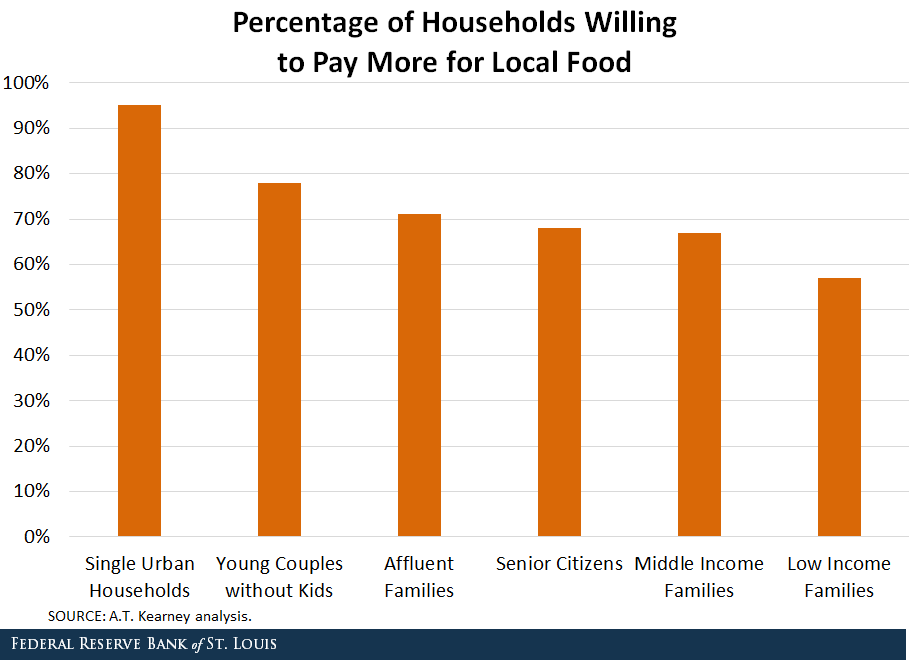The Economic Impact of Locally Produced Food
The demand for regional food—or food produced in the same region in which it is consumed—has been on the rise. For example, direct-to-consumer sales of regional food has risen from $0.4 billion in 1992 to $1.3 billion in 2012. What is driving the increase, and what are some potential economic impacts of such an increase?
Consumer Trends
A publication recently released by the Federal Reserve Bank of St. Louis and the Federal Reserve Board, Harvesting Opportunity: The Power of Regional Food System Investments to Transform Communities, explored the rapid growth of regional food systems and their potential economic impacts in communities throughout the nation.
Among its findings was that consumer demand may be driving the recent growth in the regional food industry. One analysis found that a majority of consumers across the income spectrum are willing to pay more for locally sourced foods, as shown in the figure below.

Some of the factors fueling consumer demand for local foods include:
- Consumers wanting transparency regarding the ingredients in their food
- Consumers wanting an authentic brand story
- Concerns about the environmental impact of the nonlocal food system
Local food may hold an advantage over non-local food in each of these areas.
In response to these consumer trends, many food outlets—such as grocery stores, restaurants and universities—have sought to incorporate locally sourced products. This includes “farm to school” programs in public K-12 schools, which existed in 42 percent of all U.S. school districts in the 2013-2014 school year. These programs resulted in local food purchases of about $780 million.
Economic Impact
The demand for local food has helped support an industry that had been in decline, with the number of small farms ever decreasing and the median age of farmers continually rising.
Studies have shown that the financial impacts of selling into regional markets are greater for fruit and vegetable farms with gross annual revenue under $350,000. Farms of that size that sell in regional markets are shown to be more likely to earn positive net farm income and have lower operating expense ratios, resulting in increased farm viability.
Job Creation
One study indicated that nearly 32 jobs are created for every $1 million in revenue generated by produce farms involved in some form of direct marketing, compared to only 10.5 jobs for those involved in wholesale channels exclusively. This larger local impact is likely the result of direct marketers purchasing a greater share of their inputs locally compared to producers not involved in direct marketing (89 percent compared with 45 percent).
Further research would shed additional light on the magnitude, primary causes and distribution of the local economic impact of regional food systems. Still, the initial research seems promising and suggests that investments in these systems can both improve the viability of small farmers and meet a growing consumer demand.
Additional Resources
Citation
Andrew Dumont, ldquoThe Economic Impact of Locally Produced Food,rdquo St. Louis Fed On the Economy, Dec. 5, 2017.
This blog offers commentary, analysis and data from our economists and experts. Views expressed are not necessarily those of the St. Louis Fed or Federal Reserve System.
Email Us
All other blog-related questions


